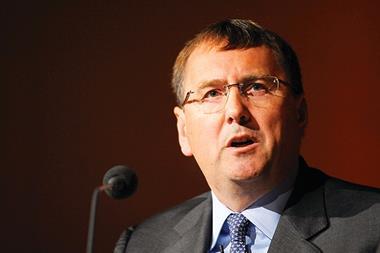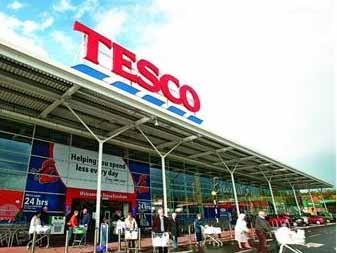Perhaps the most interesting place to be this morning is in the offices of Sainsbury’s chief executive Justin King and Andy Clarke and Dalton Philips, his counterparts at Asda and Morrisons.
King reportedly has a framed front page cutting following Tesco’s profit warning in January in his office but today’s headlines will prove a more difficult read for the Sainsbury’s boss.
Philip Clarke has rolled up his sleeves and revealed a £1bn plan to invest and “refresh” 430 UK stores – 25% of its estate – in 2012/13.
The figure is more than most analysts expected – around £300m-400m a year for the next two years – but the basic sentiments remain the same.
Clarke has built his strategy around six core themes, namely service and staff; stores and formats; price and value; range and quality; brand and marketing and clicks and bricks.
The balance of these factors remains to be seen but, as ever with Tesco, price and value will a remain cornerstone of its offer.
Backing the Big Price Drop is a bold move by Clarke. If ever there was a moment where he could have escaped the much-maligned promotion it is now so the grocer is clearly determined to make it work through targeted deals and seasonal specials, starting with the Jubilee.
But it is upon the stores that most of the focus will be trained. Clarke has to become the UK’s most accomplished shopkeeper – making his stores a “warmer” experience through huge investment while trying to battle a zero-sum market and an economy which shows few signs of meaningful improvement.
Tesco’s 216 trial stores are reportedly showing “encouraging progress” with overall customer perceptions of service, availability and quality also showing “significant improvement” in these stores.
Questions also remain over how long Clarke will stick by his plan to head up the UK business. If he continues with the structure he has created following Richard Brasher’s departure from the position of UK chief executive last month then chief operating officer Chris Bush’s position will become increasingly crucial.
Focus must also turn to deputy chief executive and marketing boss Tim Mason who holds ultimate responsibility for reconnecting a consumer disaffected by a brand that has been cold and functional in recent years.
The queues lining up to criticise the business and the brand over the last three months seem longer than the queues forming at the tills, and that’s saying something.
Clarke has done a good job of pulling attention away from some worrying fourth quarter numbers and should see a positive response from the City.
Clarke has also declared net space growth will reduce by 38% on last year as he backs up his sentiments expressed in January that the migration of non-food goods online means there is less need for large hypermarkets.
Interestingly the grocer said it is targeting further dotcom stores in densely populated areas from which we can speculate large cities such as Birmingham, Manchester and Liverpool can expect the centres soon.
But is this the end of the space race? Unlikely. While Tesco may have switched off the engines of its diggers, Sainsbury’s has plenty of space to grow into in Scotland, and Morrisons and Asda will continue to look for opportunities with their small formats.
Shore Capital analyst Clive Black believes Tesco’s call was right but could have gone further. He said: “We feel that Tesco could and should have been more bold in its investment in the UK in the near-term and reiterate the merit of a moratorium on new space for three years to focus on delivering an improvement to the core chain performance; space growth does, however, decelerate with a focus on smaller stores and online development.”
Clarke’s plan is bold, focussed and backed by significant investment. Whether it is enough to turn around consumer sentiment, in-store experience and return the belief of its backers remains to be seen.
Tesco invests £1bn in UK turnaround as like-for-likes dip
- 1
- 2
- 3
- 4
- 5
- 6
 Currently reading
Currently readingAnalysis: What does Clarke's plan mean for Tesco?
- 7
- 8
- 9
- 10



































No comments yet